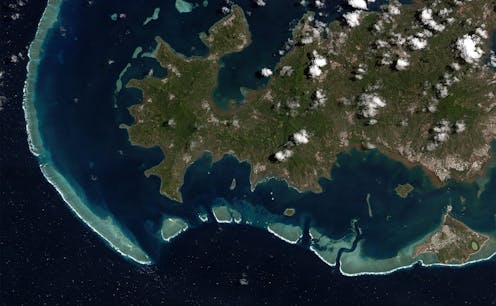
One of France’s five overseas departments, Mayotte is the southernmost island of the Comoros Archipelago, located Indian ocean between Madagascar and the African mainland. The island is the centrepiece of a coral-reef structure that was created over hundreds of thousands of years through volcanic episodes, subsidence and sea-level shifts. Made up of three different structures more than 350 kilometres long, the reef encloses a lagoon with a surface area of 1,100 square kilometres that shelters an opulent biodiversity that includes 2,300 known living species.
One of just ten such coral-reef systems on Earth, Mayotte lagoon was classified as a marine natural park in 2010, and the government has long hoped that it would be added to the list of UNESCO World Heritage sites.
Birth of a giant
On May 10, 2018, however, an event took place that no one could have predicted: 50 kilometres off Mayotte’s east coast, an underwater volcano was born. The natural phenomena that underlay the volcano’s birth and the chain of events that it has set off have forever altered the undersea landscape and the island itself, and will continue to do so for millennia.

As the volcano’s growth continued, scientists recorded 800 micro-tremors that occurred several times a day over three weeks. From May 2018 to June 2019, a series of 32 earthquakes of 5 or more on the Richter scale struck the island. In its short life, the volcano has already ejected more than 5 km³ of lava, by far the most ever observed, transforming the underwater landscape.
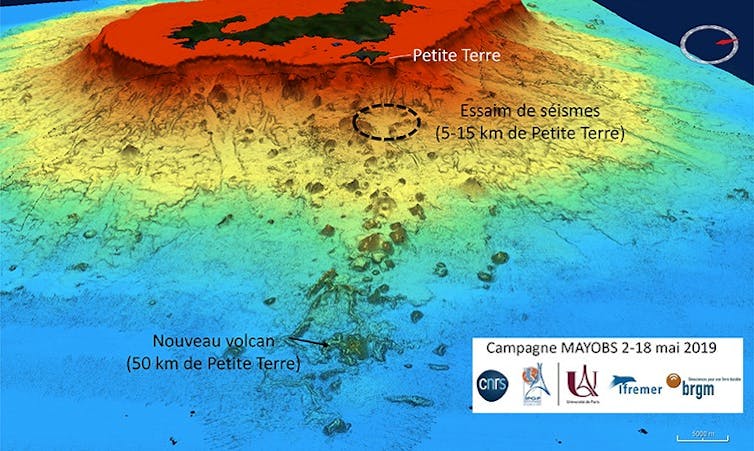
The volcano’s growth will continue for millennia, as it’s part of a natural cycle of island building, destruction and rebuilding. Indeed, just 12,000 years ago, Mayotte was five times larger than it is today.
While Mayotte’s subsidence is natural, since 2018 it has witnessed the equivalent of a sprint in geologic time – in just four years, the island has moved 20 centimetres to the east and dropped by 15 centimetres.
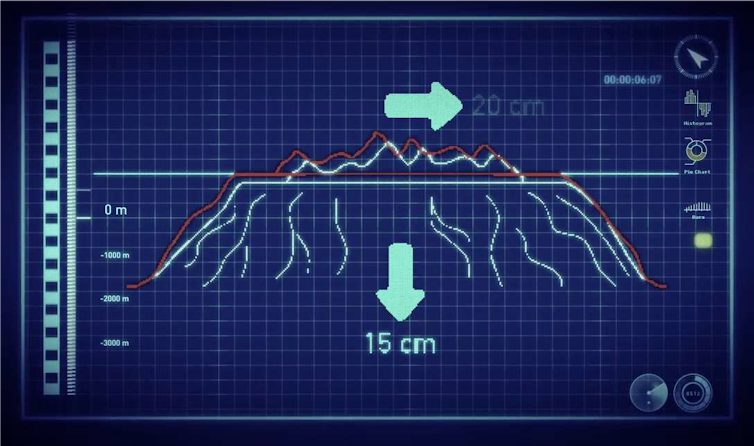
The volcano’s birth triggered a series of natural disasters that have been exacerbated by the island’s natural geography and ongoing climate change. Mahorans have long lived with the rainy season, known as Kashkazi, but a series of torrential storms have caused landslides, significant erosion and accelerated coastal retreat. All have tested Mahorans’ resilience and raised questions about how they can best adapt to the changing world around them.
The volcano also disrupted the island’s political, economic and social order. Mayotte has been a French department since 2011 and a special territory of the European Union since 2014, and until the volcano’s birth, its 2025 roadmap pointed toward the need for more effective institutions, improved education, development, health care and housing, and sustainable management of natural resources, in that order. After 2018, managing the environmental situation became top priority.
Accelerating erosion
During Mayotte’s monsoon season, rain naturally causes erosion, and the soil released is carried into the sea as silt. With the volcano’s eruption and associated swarm of earthquakes, intensifying rains and poor land management have caused erosion to rise. Forty years ago, 5,000 tons of sediment was released annually; by 2018, the rate was 20,000 tons per year, an eightfold increase. The end result is a vast flow of soil into the lagoon.
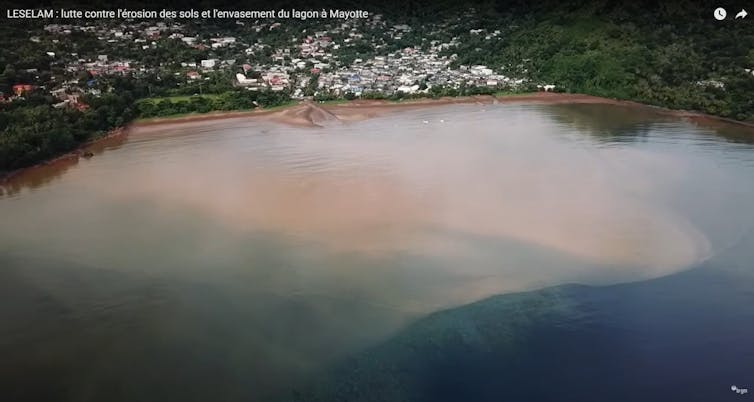
For scientists, the volcano’s birth was one of the first that could be witnessed first-hand, with many more research missions set to enrich scientific databases in the coming decades. One of the most important is LESELAM, which was launched by the BRGM in 2018. Its aim is to better understand the phenomenon of erosion and siltation of Mayotte lagoon, and so be able to better combat it.
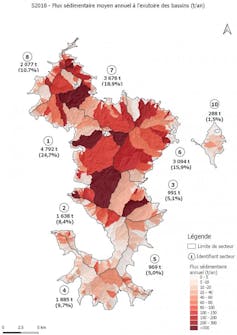
Mayotte is densely populated, and humans have long transformed its topography to facilitate agriculture and livestock ranching. The combination of the island’s volcanic soil, steep slopes, and “slash and burn” farming techniques have left behind many deforested areas known as padzas. With the rise in the island’s population, the uncontrolled growth of shantytowns has contributed increasing amounts of urban runoff that pollutes the lagoon.
Today, scientists and associations are working to raise awareness on the importance of environmental conservation. Stakeholder collaborations advance but require continued effort. Given the immense challenges, initial enthusiasm can suffer when quick results aren’t obtained.
In 2021 France declared Mayotte to be suffering from a natural disaster, but such statements are no longer sufficient. What is needed is bringing international attention to the environmental crisis that is taking place on Mayotte. To revive the island’s economy, raise hope among the population, and preserve this magnificent island, the following actions were carried out:
Researching. On 27 January 2022, an international conference detailed the significant risks that Mayotte faces in the coming years due to global warming and emphasised the importance of nature conservation.
Campaigning. On 18 May 2022, an international campaign was launched protect and restore Mayotte lagoon and advocate for change and push for action, the lagoon desilting project is registered in this environmental protection campaign.
Economic planning. Restoring the lagoon isn’t just a matter of removing the silt, but also establishing a circular-economy model to reemploy it. On an island where the unemployment rate is 30%, creating green jobs is a high priority. Salt extracted from the silt could be marketed, while the salt-free earth could be transformed into building material, supporting an existing economic sector and reducing the importation of building materials. With the lagoon’s health restored, green tourism would serve as a channel for sustainable economic growth.
Educating. First, while the volcano’s birth of the coast of Mayotte upended the island’s plan to have the lagoon inscribed as an endangered UNESCO World Heritage Site in Danger list. Second, the desilting project should be registered on the 2022-2025 strategic plan of the Coral Research and Development Platform.
The 2018 eruption of the volcano off the coast of Mayotte and the chain of natural disasters that it set off have made it crystal clear that the island’s coral reefs, lagoon and mangroves aren’t just natural gifts to be enjoyed. It is urgent for them to be protected, and so safeguard for future generations the rich biodiversity, ecosystem services, coastline protection, and natural beauty that they provide.
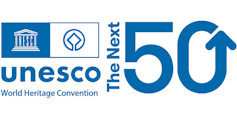
50th anniversary of the World Heritage Convention (16 November 2022): World Heritage as a source of resilience, humanity and innovation.
Noro Ravoavahy est membre de l'Alliance HQE-GBC France.
This article was originally published on The Conversation. Read the original article.







